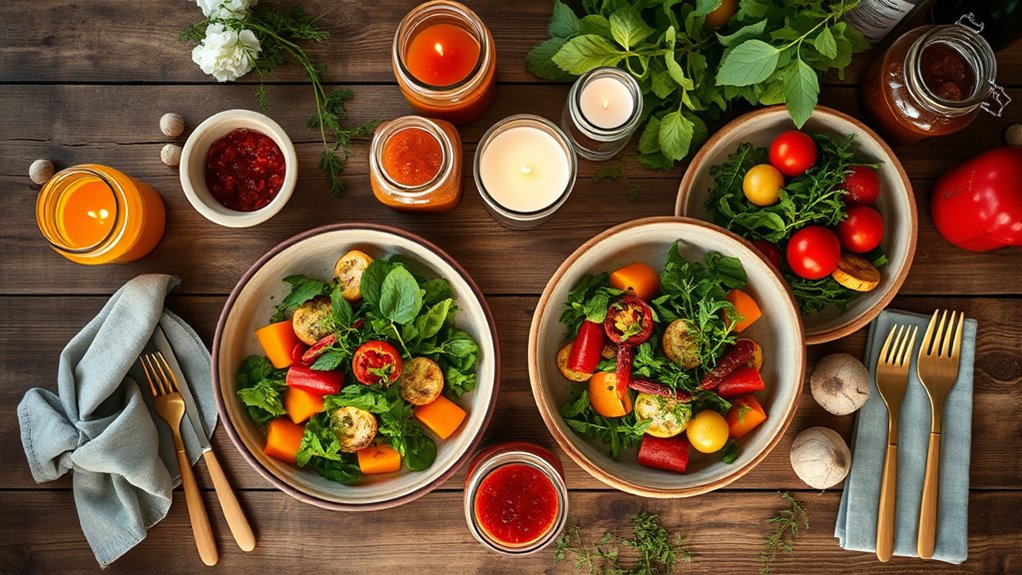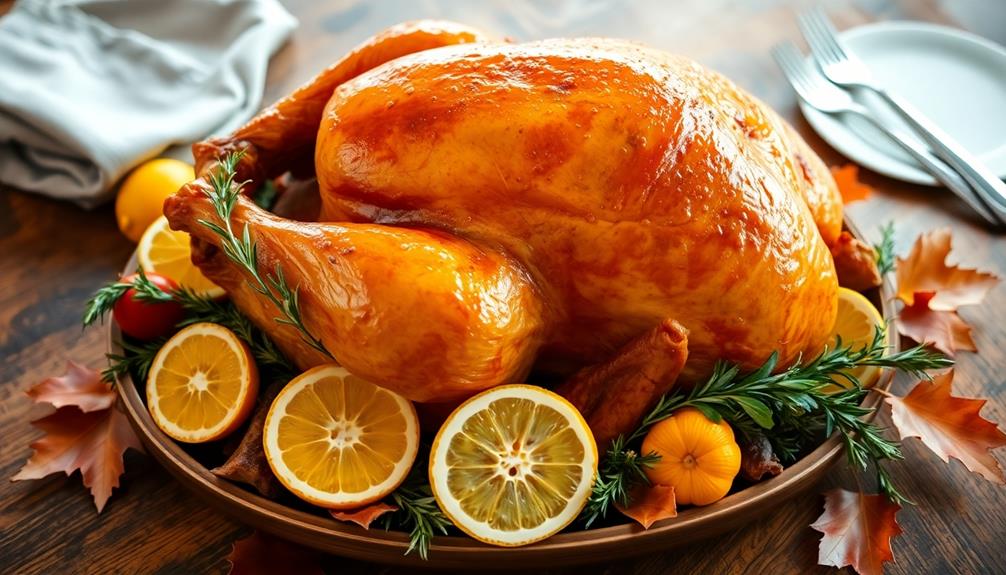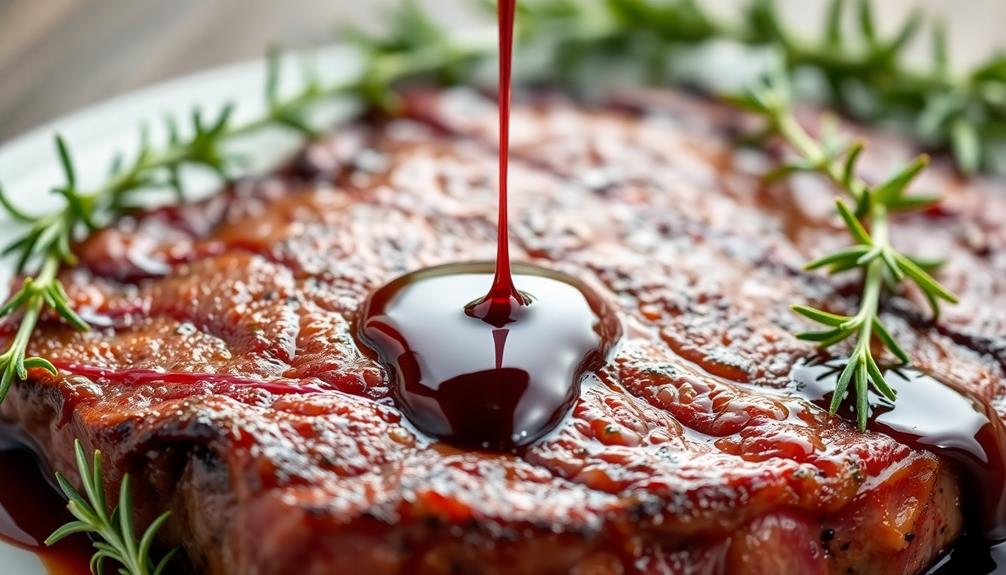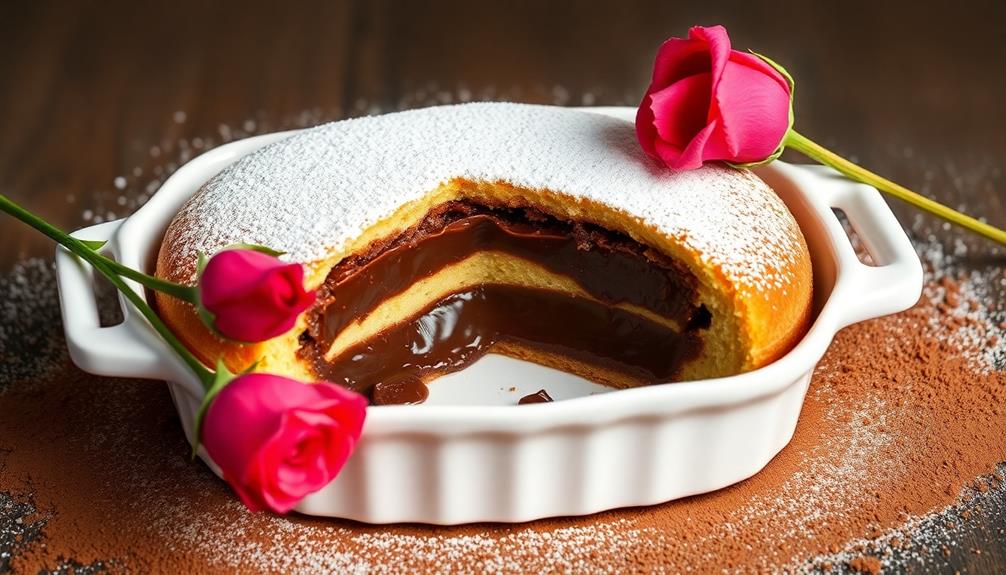To plan a zero-waste Valentine’s dinner, focus on plant-based dishes with seasonal produce and buy ingredients in bulk from local markets to cut packaging. Use reusable containers and natural decor like flowers or potted plants for setting the table. Prepare from scratch and manage portions to minimize leftovers. Incorporate eco-friendly packaging for takeout or leftovers. If you want inspiring ideas on creating this beautiful, sustainable celebration, keep exploring the options you have.
Key Takeaways
- Design a plant-based, seasonal menu that minimizes waste and highlights fresh, local ingredients.
- Shop in bulk and use reusable containers to reduce packaging and support eco-friendly sourcing.
- Prepare dishes from scratch, controlling portions and reducing leftovers, with mindful ingredient management.
- Use sustainable tableware like cloth napkins, glassware, and natural decor to create an eco-conscious ambiance.
- Incorporate zero-waste practices such as composting food scraps and gifting homemade treats in reusable packaging.

Are you looking for a way to celebrate Valentine’s Day that’s both romantic and environmentally responsible? Planning a zero-waste dinner is a meaningful way to show your love for your partner and the planet. Start by focusing on plant-based recipes, which tend to produce fewer waste and have a smaller carbon footprint. Incorporate fresh vegetables, grains, and legumes to create flavorful, satisfying dishes. Think vibrant salads with seasonal produce, hearty vegetable stews, or elegant pasta dishes with local herbs. These recipes are not only delicious but also inherently low waste, especially when you buy in bulk or choose ingredients with minimal packaging.
Celebrate Valentine’s with plant-based, low-waste recipes for a romantic, eco-friendly dinner that shows love for both your partner and the planet.
When it comes to presentation and serving, eco friendly packaging can make a big difference. Use reusable containers, glass jars, or compostable wraps instead of single-use plastics. If you’re ordering takeout or preparing dishes ahead of time, opt for containers made from bamboo, paper, or other biodegradable materials. This reduces waste and adds a thoughtful touch to your celebration. Keep in mind that simple, minimal packaging often means less waste, so try to prepare everything from scratch when possible. Cooking at home allows you to control portions, reduce leftovers, and avoid excess packaging altogether. Reducing waste can also be achieved by composting food scraps and biodegradable materials, which further supports your zero-waste goals. Incorporating sound design principles such as mindful preparation and efficient resource use can enhance your overall experience and sustainability.
To add a special touch, consider crafting a beautiful table setting using reusable cloth napkins, candles in glass holders, and natural decor like flowers from your garden or potted plants. This not only minimizes waste but also creates a warm, intimate atmosphere. If you want to gift something, think about homemade treats packed in sustainable containers or small potted herbs that your partner can enjoy long after the meal. These thoughtful touches reinforce your commitment to sustainability and make the evening more meaningful.
Planning ahead is key to a zero-waste dinner. Make a shopping list based on your recipes to avoid impulse buys, and buy from local markets when possible. This supports local farmers and reduces the environmental impact of transportation. Be mindful of portion sizes to prevent leftovers, and store any leftovers in reusable containers for future meals. Remember, the goal isn’t perfection but making conscious choices that align with your values. A zero-waste Valentine’s dinner isn’t just about the food; it’s about celebrating love responsibly. When you combine plant-based recipes with eco friendly packaging, you create an experience that’s romantic, sustainable, and truly memorable for both you and your planet. Additionally, selecting projectors with high contrast ratios can enhance the visual quality of your movie nights, making your home cinema experience even more enjoyable.
Frequently Asked Questions
How Can I Incorporate Local Ingredients Into the Menu?
You can incorporate local ingredients into your menu by prioritizing local sourcing and seasonal ingredients. Visit farmers’ markets or connect with nearby farms to find fresh, sustainable produce, dairy, and meats. Plan your dishes around what’s in season to reduce waste and support local producers. By choosing local and seasonal ingredients, you enhance flavor, minimize transportation emissions, and create a memorable, eco-friendly Valentine’s dinner that celebrates community and sustainability.
What Are Creative Ways to Reuse Leftovers?
Imagine transforming leftover roasted veggies into a vibrant frittata or turning day-old bread into crunchy croutons. You can upcycle ideas like leftover grains into hearty salads or soups. Don’t forget composting tips—scrape scraps into your compost bin to nourish future crops. Reusing leftovers this way reduces waste, saves money, and adds flavor to your next meal. Get creative, and turn leftovers into new, delicious dishes!
How Do I Select Eco-Friendly Tableware?
You should choose eco-friendly tableware by prioritizing reusable options, like glass or bamboo dishes, to cut waste. When shopping, opt for eco-friendly products made from sustainable materials, and look for certifications like FSC. Understanding composting basics helps you dispose of biodegradable tableware properly, reducing landfill waste. Always consider the lifecycle of your tableware, and incorporate composting practices to guarantee your eco-friendly choices contribute to a greener environment.
Can I Make a Zero-Waste Dessert?
Yes, you can make a zero-waste dessert by choosing local, organic ingredients and avoiding packaging. Use fresh fruits, nuts, and natural sweeteners like honey or maple syrup. Compost leftover scraps with composting tips in mind, and opt for zero waste packaging when purchasing ingredients, like bulk bins or reusable containers. This approach reduces waste and creates a delicious, eco-friendly treat for your Valentine’s celebration.
How to Involve My Partner in Sustainable Dining?
You can involve your partner in sustainable dining by sharing recycling tips and composting methods together. Encourage open conversations about reducing waste, and plan meals that focus on local, seasonal ingredients. Invite them to join you in shopping with reusable bags, and set up a compost bin for food scraps. Working as a team makes it fun and easier to adopt eco-friendly habits, making your shared experience more meaningful.
Conclusion
As you finish your zero-waste Valentine’s dinner, remember that love isn’t just in the grand gestures, but in the small, mindful choices you make. While the table may be simple and the ingredients humble, the effort you put into reducing waste transforms an ordinary meal into a meaningful act of care—for both your partner and the planet. Sometimes, the smallest changes create the most profound impact, turning an ordinary evening into an extraordinary celebration of love and sustainability.









